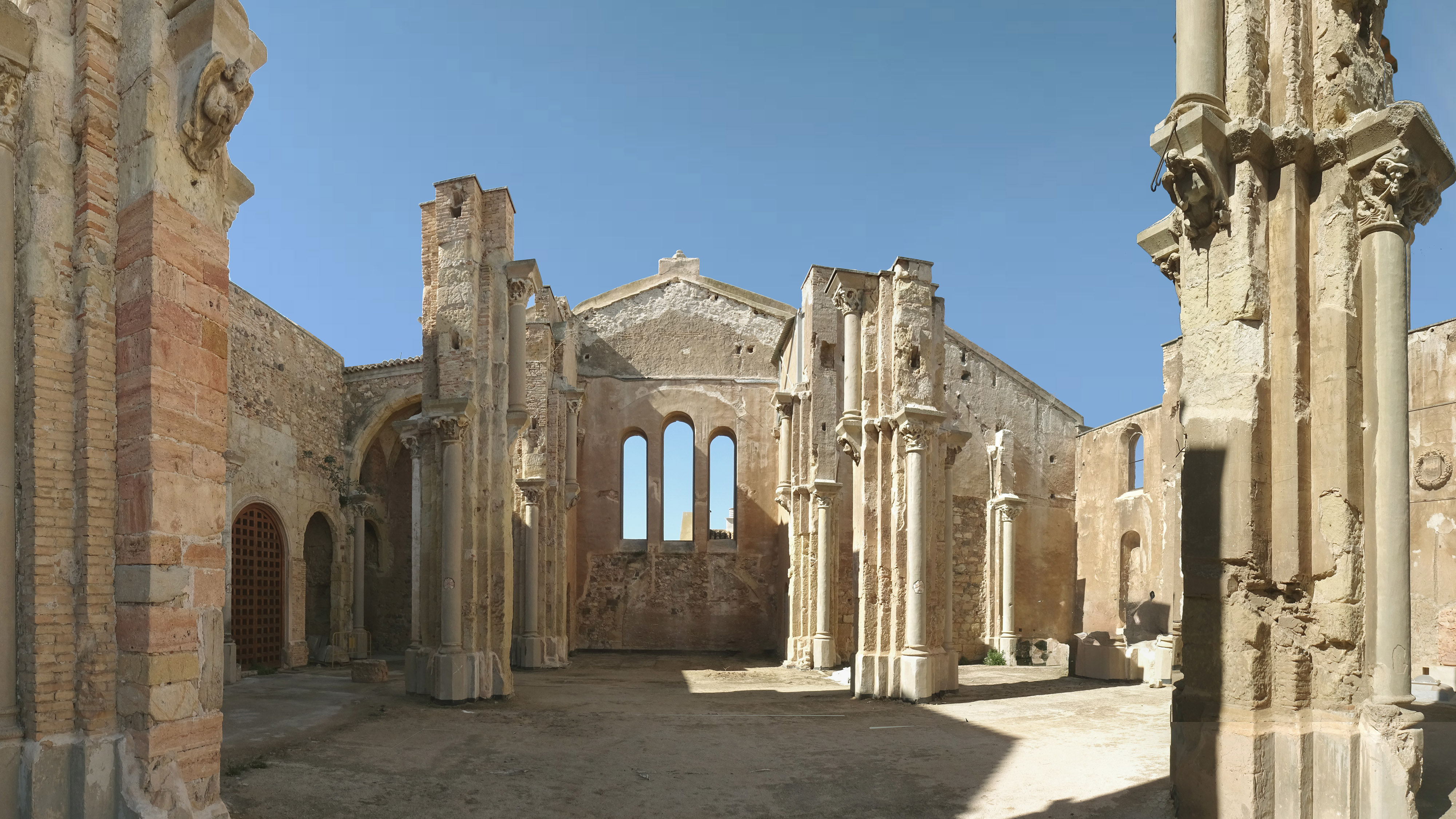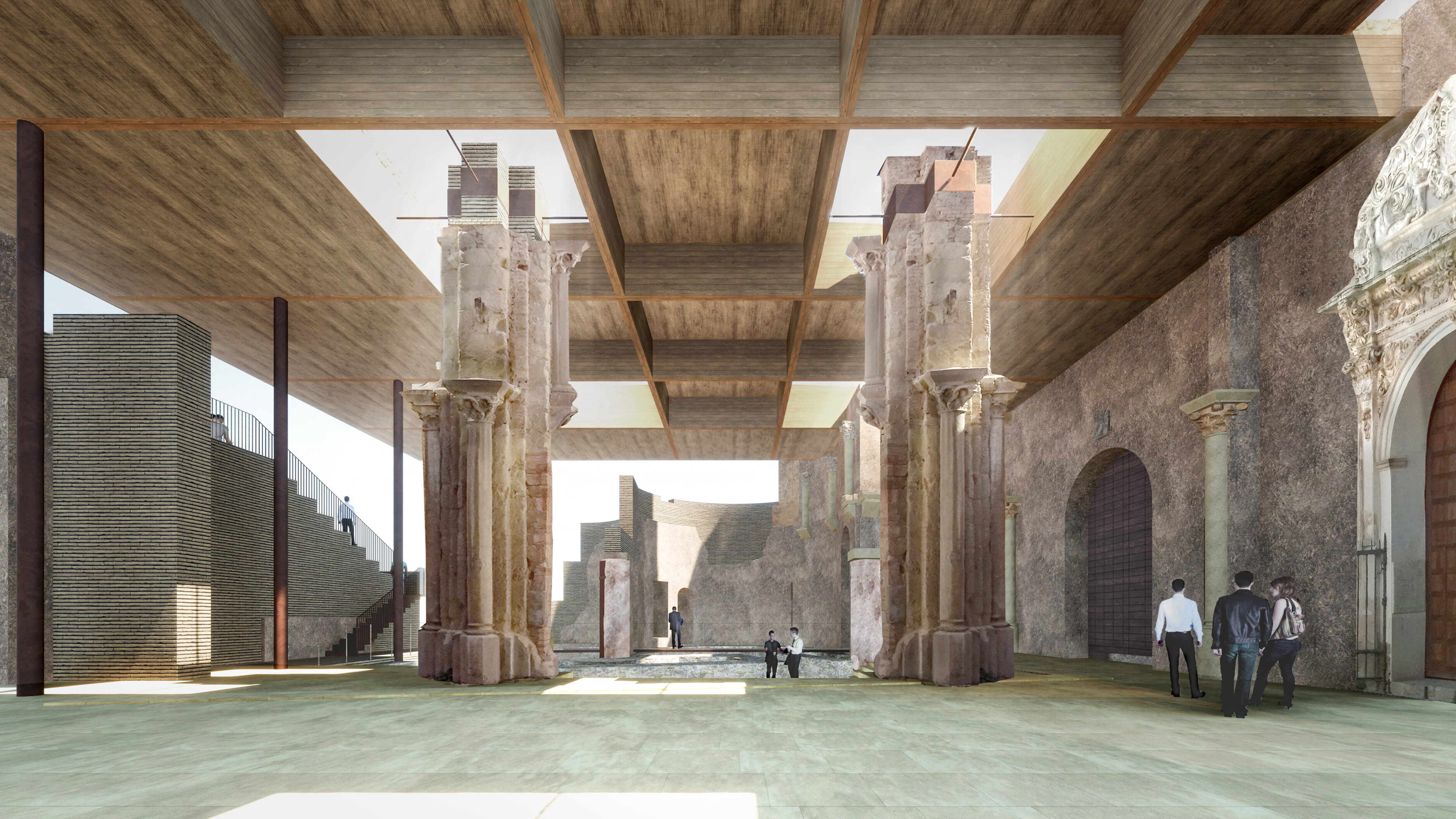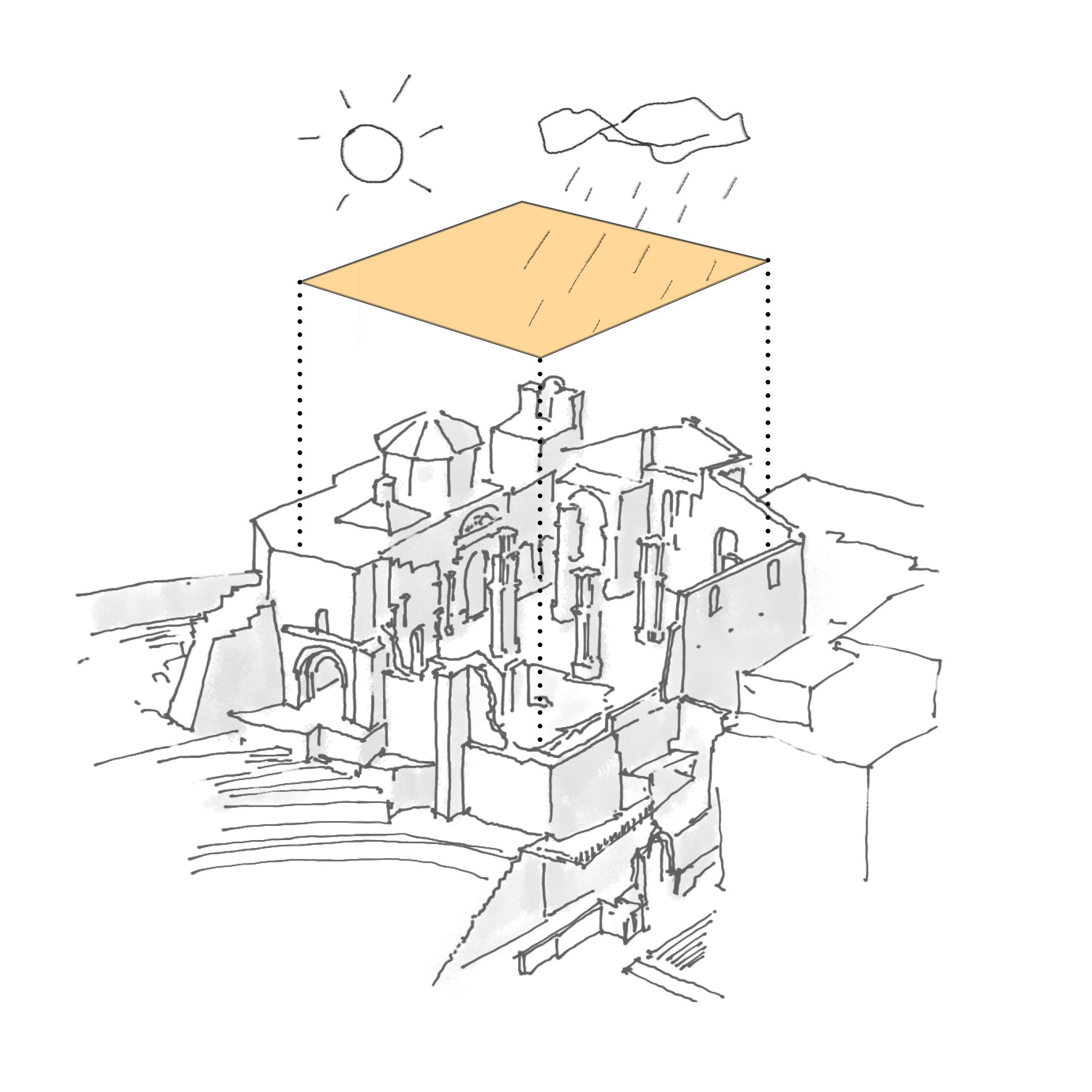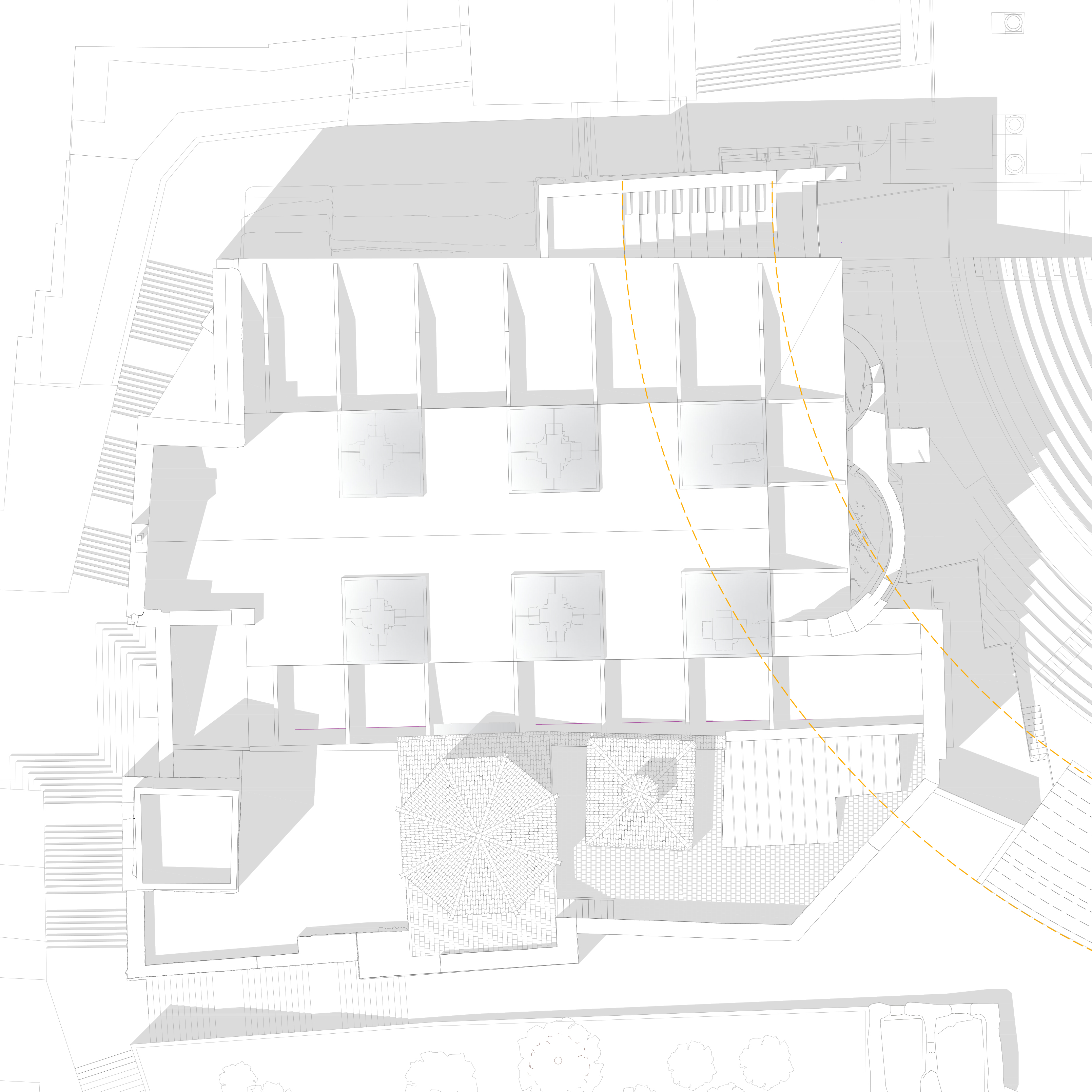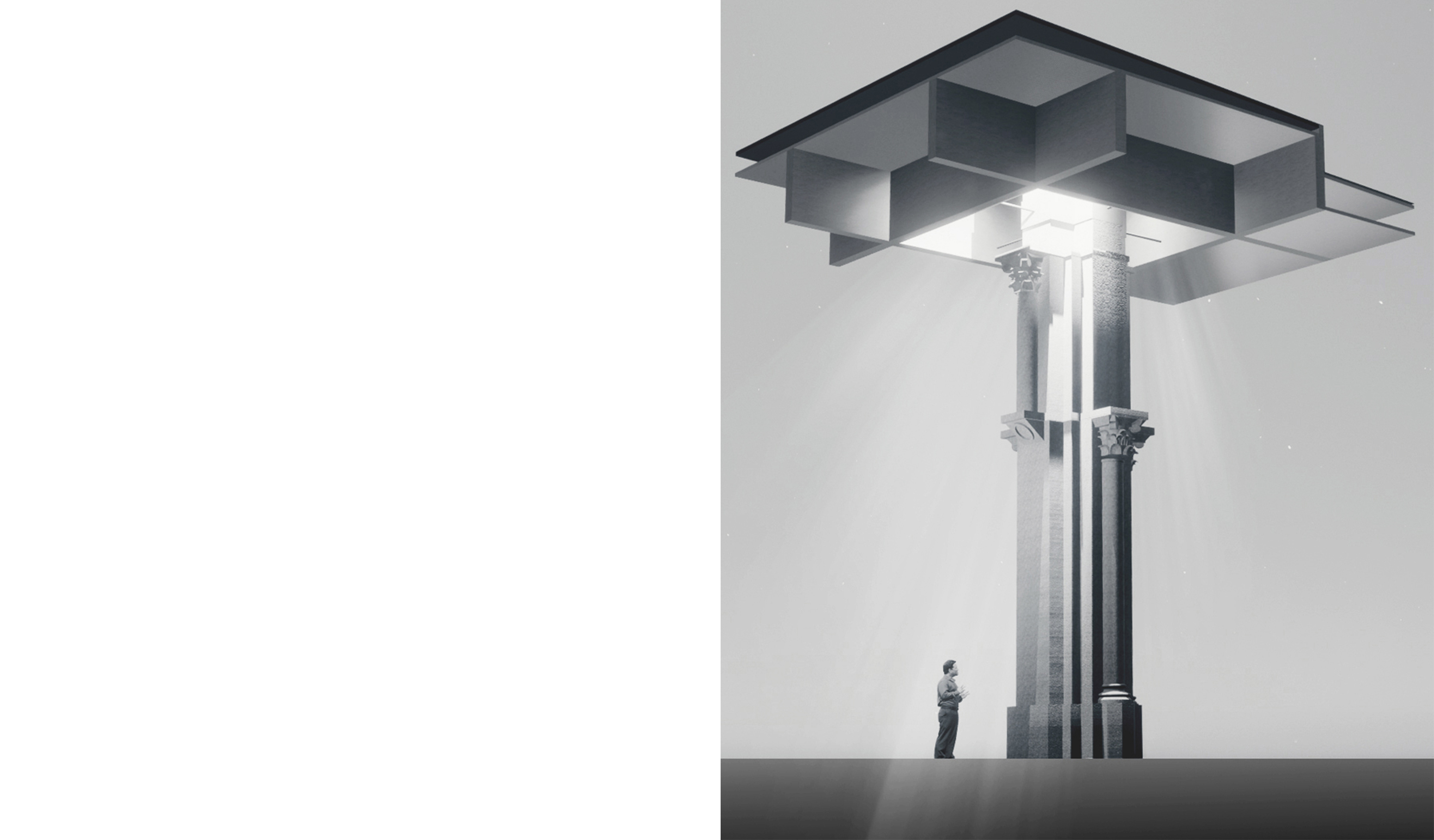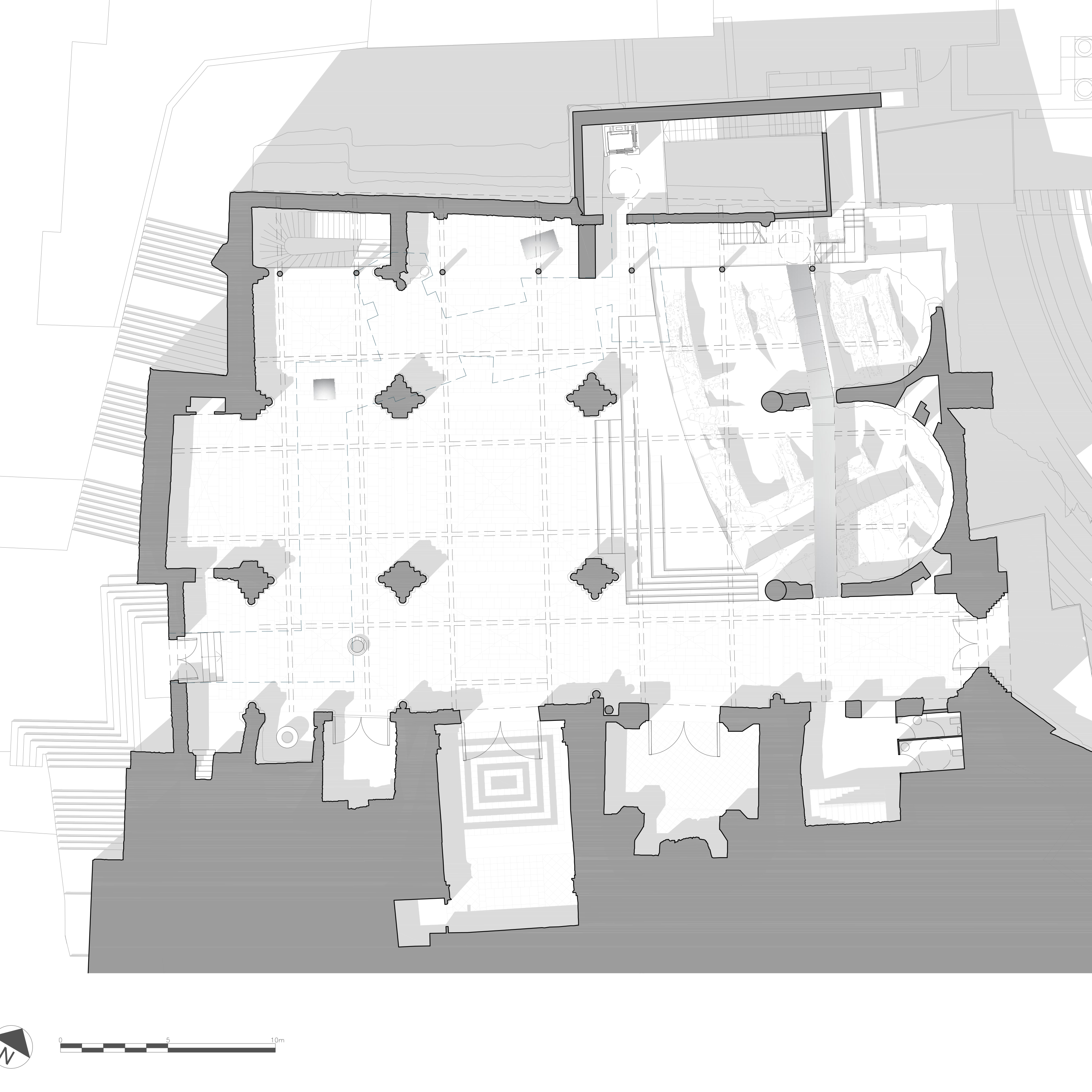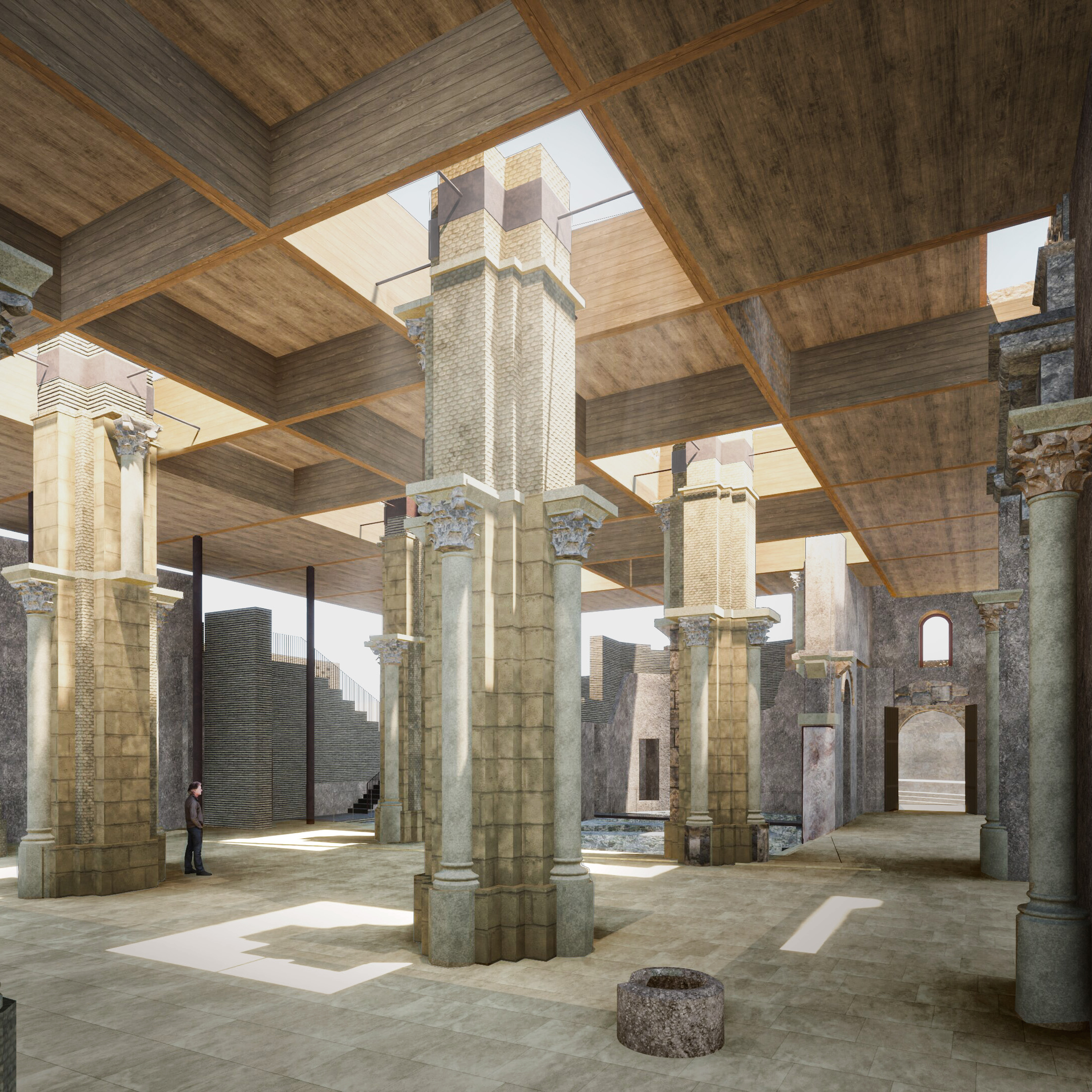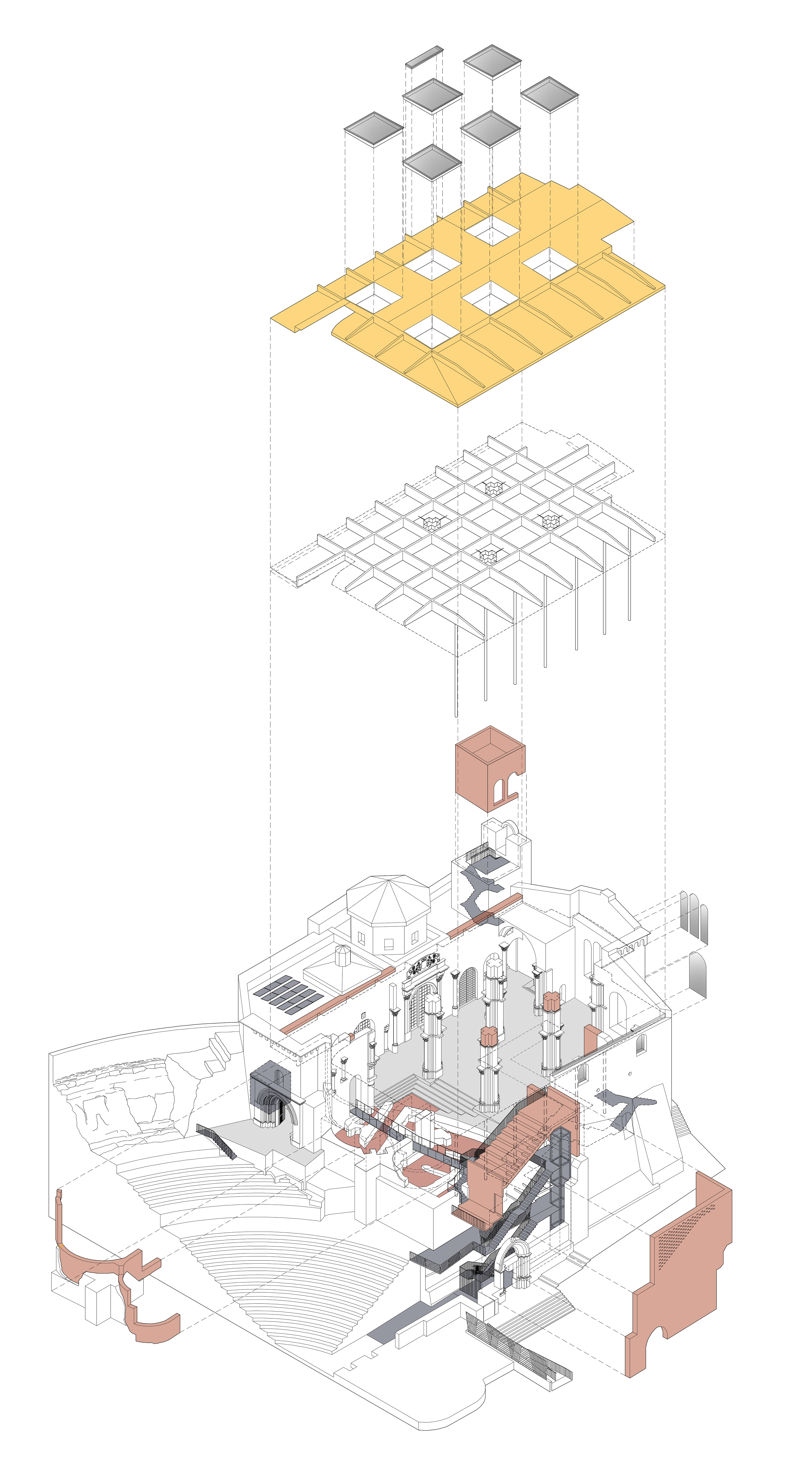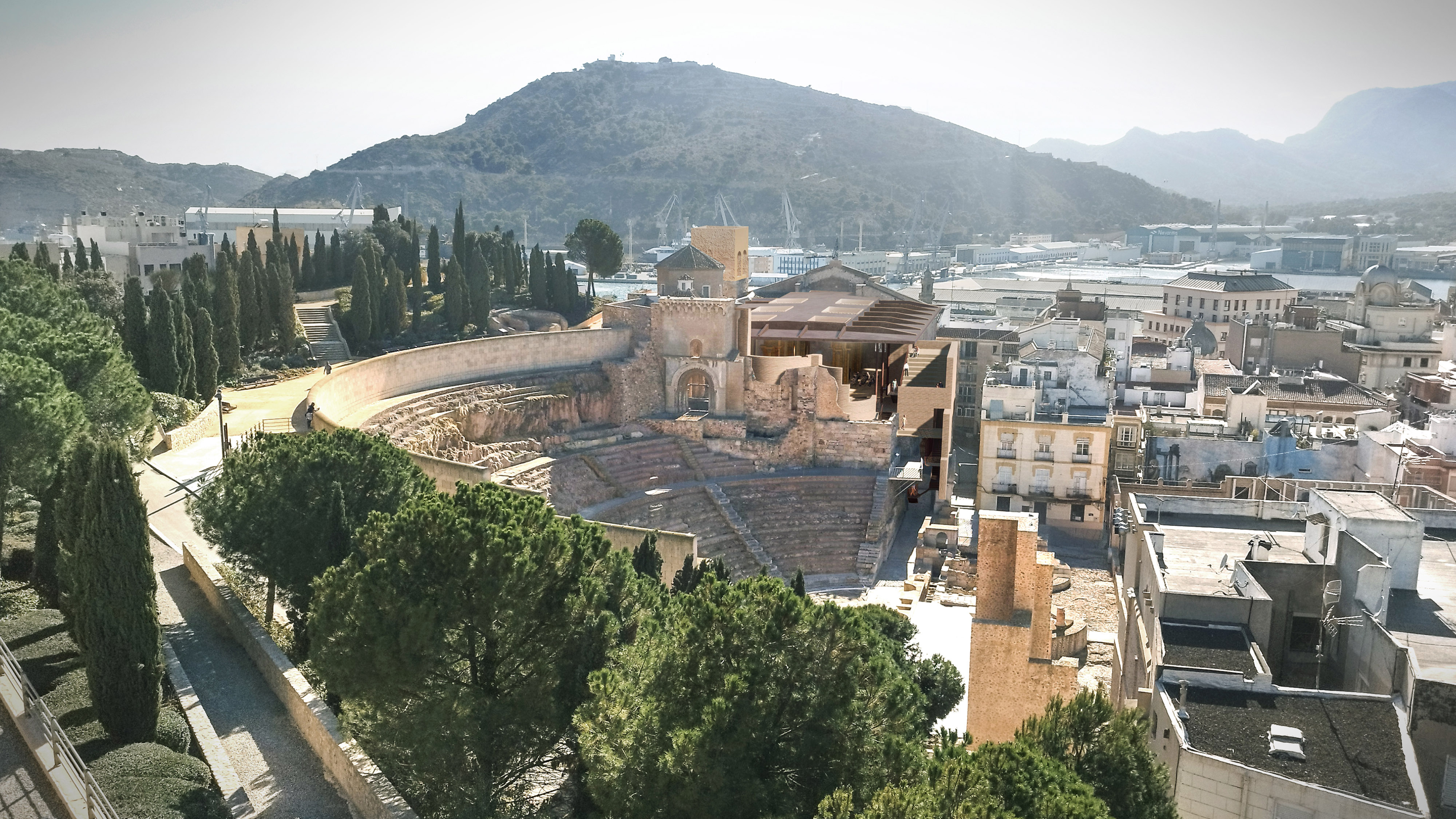The premises outlined in the previous sections lead to the need for an initial phase focused on protecting the archaeological and architectural remains.
Historical stratification becomes the central argument of the intervention, with the project aiming to make it clearly visible.
One of the key challenges is the instability of the structural elements—bearing walls and supporting columns—and their prolonged exposure to the elements, which risks accelerating their deterioration.
From an intervention-criteria perspective, priority is given to highlighting the archaeological remnants that now define the current constructional body of the Cathedral, emphasising their evocative presence and intrinsic beauty.
These elements will become the visual anchors of the space, including the physical connection with the adjacent Roman Theatre through the surviving wall fragments of the cavea structure and the northern façade, which originally closed the western aditus.
The proposed roof—a protective envelope—is conceived with a formally neutral approach. Rather than competing with the values that must be preserved, it reinforces the layered complexity of the surviving ruins and subtly alludes to the Cathedral’s former spatial configuration: the side aisles are reconstructed at a lower height than the central nave, and the new supports, structurally independent from the historic ones, allow a spatial reading that recalls the composition of the former north chapels.
The simplicity of the proposed volume enhances the perception of the whole, reintroducing essential spatial proportions and focusing attention on the cruciform pillars, apses, perimeter walls, and other surviving architectural elements.
The visual impact of the roof is deliberately minimal in the urban landscape: its upper plane sits below the height of the southern, eastern, and western façades, and only slightly above the northern enclosure, subtly outlining the profile of the eaves.
Given the insufficient structural capacity of the original pillars, their reuse as supports is not contemplated. Instead, an independent vertical structure is proposed on the north side, re-establishing the historic relationship between nave and chapels, while taking advantage of existing wall supports on the south side.
Improving the accessibility of the building is another key objective, together with updated evacuation requirements. The project proposes a new circulation core at the north façade, adjacent to the current exit of the Roman Theatre complex. This new volume accommodates a staircase, lift, and the existing entrance gallery to the theatre, all within an envelope that opens laterally towards it. The new structure resolves the elevation where the neo-Gothic door is located and completes the cavea configuration in this sector.
The archaeological crypt gallery that provides access to the Roman Theatre is considered a highly valuable intervention, not only for the archaeological remains embedded along its route but also for its architectural significance as an approach sequence to the theatre. For this reason, it is preserved in its current form.
The project’s urban presence is defined by its intention to integrate sensitively into the context, acknowledging its role as a key landscape landmark—both at the scale of the city and in its immediate relationship with Osario Street and the Cornisa Park.
The reconstruction of the upper volume of the bell tower, together with the new circulation core, responds to this objective, strengthening the Cathedral’s long-distance visibility and accompanying the winding approach that leads to the site.
Cartagena l Spain
Architects Carlos Campos Architecture & Mano de Santo Architecture Team
Competition commissioned by the City Council of Cartagena
